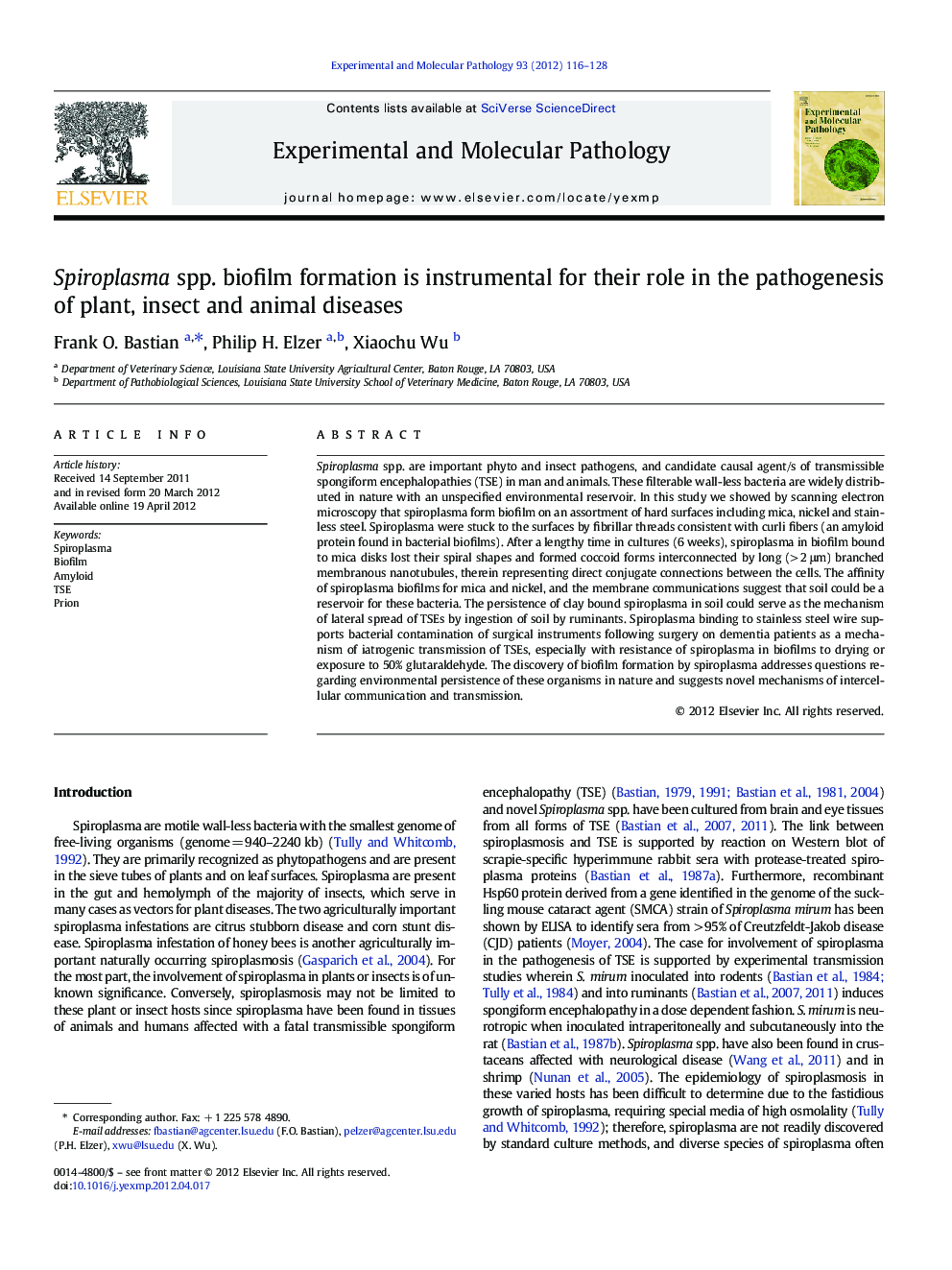| کد مقاله | کد نشریه | سال انتشار | مقاله انگلیسی | نسخه تمام متن |
|---|---|---|---|---|
| 2775404 | 1152325 | 2012 | 13 صفحه PDF | دانلود رایگان |

Spiroplasma spp. are important phyto and insect pathogens, and candidate causal agent/s of transmissible spongiform encephalopathies (TSE) in man and animals. These filterable wall-less bacteria are widely distributed in nature with an unspecified environmental reservoir. In this study we showed by scanning electron microscopy that spiroplasma form biofilm on an assortment of hard surfaces including mica, nickel and stainless steel. Spiroplasma were stuck to the surfaces by fibrillar threads consistent with curli fibers (an amyloid protein found in bacterial biofilms). After a lengthy time in cultures (6 weeks), spiroplasma in biofilm bound to mica disks lost their spiral shapes and formed coccoid forms interconnected by long (> 2 μm) branched membranous nanotubules, therein representing direct conjugate connections between the cells. The affinity of spiroplasma biofilms for mica and nickel, and the membrane communications suggest that soil could be a reservoir for these bacteria. The persistence of clay bound spiroplasma in soil could serve as the mechanism of lateral spread of TSEs by ingestion of soil by ruminants. Spiroplasma binding to stainless steel wire supports bacterial contamination of surgical instruments following surgery on dementia patients as a mechanism of iatrogenic transmission of TSEs, especially with resistance of spiroplasma in biofilms to drying or exposure to 50% glutaraldehyde. The discovery of biofilm formation by spiroplasma addresses questions regarding environmental persistence of these organisms in nature and suggests novel mechanisms of intercellular communication and transmission.
► All Spiroplasma spp. form biofilm with extracellular polysaccharide matrix.
► Spiroplasma biofilms (long standing) are made up of 200 to 300 nm coccoid forms.
► Curli fibrils in spiroplasma biofilm on mica represent functional bacterial amyloid.
► Conjugate Y shaped branching nanotubules are seen between spiroplasma coccoid forms.
► Spiroplasma biofilm on stainless steel show ability to bind to surgical instruments.
Journal: Experimental and Molecular Pathology - Volume 93, Issue 1, August 2012, Pages 116–128